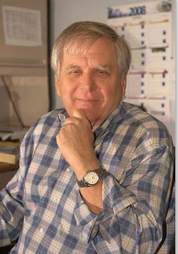
Dayton’s passion for history began with walks around his new neighborhood of Twickenham in Huntsville thirty years ago. House after house in this antebellum community had a story to tell, and he began to photograph them. Soon he wanted old images of the houses, HABS surveys, and whatever he could find. Then his high-tech skills took over, and he wanted to offer to others what he was collecting. Eventually others joined him in the effort.
The more materials Dayton has gathered for the HHC, the more he has realized how much more there is to find. He recognized the extensive work others have done to capture, interpret, and preserve the past in Huntsville and Madison County—and regretted how few of us know of its existence. Much of any locale’s historical treasure may be inconvenient at best and inaccessible at worst, unless you live there, know it’s there, know where to look, and have the time and means to do that. Dayton, with a high-tech back-ground in instructional technology, wanted to put his skills to work in gathering what others have created and bringing it to those who would appreciate it. HHC is that gathering place, a constantly growing collection of items related to the people, places, and stories of Huntsville-Madison County.
Under a link called “Places,” the HHC allows you to browse modern and historic maps of Huntsville with every structure outlined and offers maps from the Harvie Jones Architectural Collection. You can search by street address, and if the structure has con-temporary and/or historic photographs available, you can click and view them. You can view the historic register paperwork for various districts, with descriptions house by house. This section of HHC also offers an 1871 “Bird’s Eye View” rendering of Huntsville and a 1950s aerial view.
In the section labeled “People,” Dayton and his wife Carol have created around a thousand scrapbook pages about various Huntsville characters. I call them scrapbooks because that’s what they are: snippets of information about each person. Whenever the Day-tons or someone else gleans another tidbit about someone, they paste it into the page, acknowledging the source. It might be a photo or a genealogical snippet of who begat whom. It might be an obituary, a diary entry, an address from a city directory, or a notice that they served on a particular board. A genealogist who descends from one of these thousands will undoubtedly be led to sources they never knew they should tap. Visitors to the site can send their own material as well.
Dayton’s friend John P. Rankin has invested his own retirement years in building the “Madison Memories Collection,” a subset of which is accessible through Dayton’s site. Rankin has been researching Madison County’s history for more than two decades, gathering volumes on the Madison Station area and documenting approximately fifty cemeteries on the Redstone Arsenal property. He has not simply transcribed tombstones, though we genealogists would have been grateful for only that. Rankin has tied tomb-stones to census records, attempting to get a fuller picture of who lies beneath the stones, and you can get to his reports through the HHC.
Once again making other people’s work accessible, Dayton has made available digital copies of the Huntsville Historical Review and the Historic Huntsville Quarterly of Local Architecture and Preservation, starting with the premiere editions in 1971 and 1975, respectively. The service is provided by the cooperative collaboration of the HHC with the Huntsville-Madison County Historical Society, the Historic Huntsville Foundation, and the Huntsville-Madison County Public Library. Genealogists, it’s beautifully scanned and fully searchable across all issues, so you’ll be able to find all mentions of your ancestors with ease.
One thing you will not easily find on the HHC site is Dayton’s name. It’s never been about that. In fact, every time I tried to compliment him on this work, he immediately put the spotlight on other people. “I’m just making other people’s work more accessible,” he said. To which we all say, “Thank you, Deane!”
What about my original question, though? Could there be a Deane Dayton in every Alabama county, skilled and generous enough to take up the charge of gathering that county’s obscure nuggets of wonderfulness into publicly accessible view? I hope so.
Author
Donna Cox Baker has served as editor-in-chief of Alabama Heritage since 2002. She acquires history texts for the University of Alabama Press, co-chairs the Statewide Initiatives Committee of the Alabama Bicentennial Commission, and hosts the Golden Egg Genealogist blog (gegbound.com).